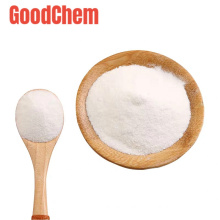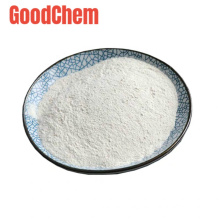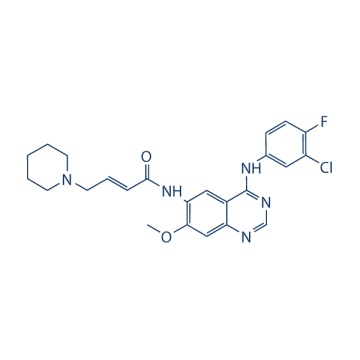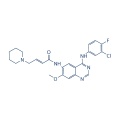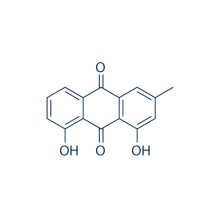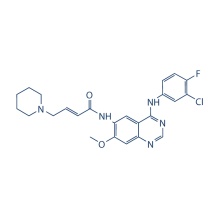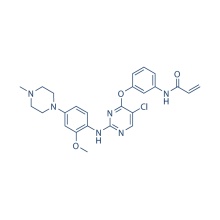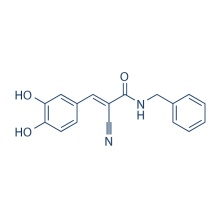.cp_wz table {border-top: 1px solid #ccc; border-left: 1px solid #ccc; } .cp_wz table td {border-right: 1px solid #ccc; borda inferior: 1px sólido #ccc; preenchimento: 5px 0px 0px 5px;} .cp_wz tabela th {border-right: 1px solid #ccc; border-bottom: 1px solid #ccc; preenchimento: 5px 0px 0px 5px;} \ n Peso molecular: \ n 469,94 PF-299804 é um potente inibidor irreversível de pan-ErbB, principalmente para EGFR com IC50 de 6 nM, eficaz contra NSCLCs com mutações EGFR ou ERBB2 (resistente a gefitinib ), bem como aqueles que abrigam a mutação EGFR T790M. Fase 2. \ n Atividade biológica PF299804 é um inibidor específico da família ERBB de quinases. PF299804 inibe a sinalização de EGFR e induz apoptose na linha de células H3255 GR contendo EGFR T790M. PF299804 é eficaz em linhas celulares de NSCLC sensíveis e resistentes a gefitinibe. PF299804 inibe o crescimento de células H3255 e HCC827 projetadas para expressar EGFR T790M. PF299804 inibe a fosforilação de EGFR na presença da mutação T790M. Acredita-se que PF-299804 inibe irreversivelmente a atividade da tirosina quinase ERBB através da ligação no local ATP e modificação covalente de resíduos de cisteína nucleofílicos nos domínios catalíticos de membros da família ERBB. PF299804 mostra efeitos inibidores de crescimento significativos em células de câncer gástrico amplificadas por HER2 (SNU216, N87) e tem valores de concentração inibitórios 50% mais baixos em comparação com outros inibidores de tirosina quinase EGFR, incluindo gefitinibe, lapatinibe, BIBW-2992 e CI-1033 . PF299804 induz apoptose e parada de G1 e inibe a fosforilação de receptores na família HER e vias de sinalização a jusante, incluindo STAT3, AKT e quinases extracelulares reguladas por sinal (ERK) em células de câncer gástrico amplificadas por HER2. PF299804 também bloqueia a formação de heterodímero EGFR / HER2, HER2 / HER3 e HER3 / HER4, bem como a associação de HER3 com p85α em células SNU216. Uma pesquisa recente usa 47 câncer de mama humano e linhas epiteliais de mama imortalizadas para avaliar os efeitos de inibição de PF299804, os resultados indicam que PF299804 inibe preferencialmente o crescimento de linhas de células de câncer de mama amplificadas HER-2 do que linhas não amplificadas (RR = 3,39, p Oralmente administrado PF299804 efetivamente inibe o crescimento de xenoenxertos HCC827 Del / T790M. A baixa administração oral de PF-299804 (15mg / kg) causa atividade antitumoral significativa, incluindo regressões tumorais marcadas em uma variedade de modelos de xenoenxertos de tumor humano que expressam e / ou superexpressam membros da família ERBB ou conter a mutação dupla (L858R / T790M) em ERBB1 (EGFR) associada à resistência a gefitinibe e erlotinibe. Protocolo (apenas para referência) Ensaio de quinase: [1]
|
ELISA-Based ERBB Kinase Assay
|
The ERBB1, ERBB 2, and ERBB4 cytoplasmic fusion proteins are made by cloning the ERBB1 sequence (Met-668 to Ala-1211), ERBB2 (Ile-675 to Val-1256), and ERBB4 sequence (Gly-259 to Gly-690) into the baculoviral vector pFastBac using PCR. Proteins are expressed in baculovirusinfected Sf9 insect cells as GST fusion proteins. The proteins are purified by affinity chromatography using glutathione sepharose beads. Inhibition of ERBB tyrosine kinase activity is assessed using an ELISA-based receptor tyrosine kinase assay. Kinase reactions (50 mM HEPES, pH 7.4, 125 mM NaCl, 10 mM MgCl2, 100 μM sodium orthovanadate, 2 mM dithiothreitol, 20 μM ATP, PF299804 or vehicle control, and 1-5 nM GST-erbB per 50 μL of reaction mixture) are run in 96-well plates coated with 0.25 mg/mL poly-Glu-Tyr. The reactions are incubated for 6 minutes at room temperature while being shaken. Kinase reactions are stopped by removal of the reaction mixture, and then the wells are washed with wash buffer (0.1% Tween 20 in PBS). Phosphorylated tyrosine residues are detected by adding 0.2 μg/mL antiphosphotyrosine antibody (Oncogene Ab-4; 50 μL/well) coupled to horseradish peroxidase (HRP) diluted in PBS containing 3% BSA and 0.05% Tween 20 for 25 minutes while being shaken at room temperature. The antibody is removed, and plates are washed in wash buffer. HRP substrate (SureBlue3,3,5,5-tetramethyl benzidine or TMB) is added (50 μL per well) and incubated for 10-20 minutes while it is shaken at room temperature. The TMB reaction is stopped with the addition of 50 μL of stop solution (0.09 N H2SO4). The signal is quantified by measuring absorbance at 450 nm. IC50 values are determined for PF299804 using the median effect method.
|
Ensaio de células: [1]
|
Cell lines
|
Various NSCLC cell lines
|
|
Concentrations
|
0-20 nM
|
|
Incubation Time
|
72 hours
|
|
Method
|
Growth and inhibition of growth is assessed by 5-(3-carboxymethoxyphenyl)-2-(4-sulfophenyl)-2H-tetrazolium (MTS) assay. This assay, a colorimetric method fordetermining the number of viable cells, is based on the bioreduction of MTS by cells to a formazan product that is soluble in cell culture medium, can be detected spectrophotometrically. The cells are exposed totreatment for 72 hours, and the number of cells used per experiment is determined empirically. All experimental points are set up in 6 to 12 wells, and all experiments are repeated at least thrice. The data are graphically displayed using GraphPad Prism version 3.00 for Windows (GraphPad Software). The curves are fitted using a nonlinear regression model with a sigmoidal dose response.
|
Estudo Animal: [1]
|
Animal Models
|
HCC827-GFP or HCC827-Del/T790M lung cancer cells (in 0.2 mL of PBS) are inoculated s.c. into the lower-right quadrant of the flank of nude mice
|
|
Formulation
|
PF299804 is dissolved in DMSO in 10 mM at -20 °
|
|
Dosages
|
10 mg/kg
|
|
Administration
|
Administered via oral gavage
|
|
Solubility
|
1% DMSO/30% polyethylene glycol/1% Tween 80, pH 9,
10 mg/mL
|
|
* Please note that Selleck tests the solubility of all compounds in-house, and the actual solubility may differ slightly from published values. This is normal and is due to slight batch-to-batch variations.
|
Conversão de diferentes modelos de animais com base em BSA (valor com base em dados das diretrizes preliminares da FDA)
|
Species
|
Baboon
|
Dog
|
Monkey
|
Rabbit
|
Guinea pig
|
Rat
|
Hamster
|
Mouse
|
|
Weight (kg)
|
12
|
10
|
3
|
1.8
|
0.4
|
0.15
|
0.08
|
0.02
|
|
Body Surface Area (m2)
|
0.6
|
0.5
|
0.24
|
0.15
|
0.05
|
0.025
|
0.02
|
0.007
|
|
Km factor
|
20
|
20
|
12
|
12
|
8
|
6
|
5
|
3
|
|
Animal A (mg/kg) = Animal B (mg/kg) multiplied by
|
Animal B Km
|
|
Animal A Km
|
Por exemplo, para modificar a dose de resveratrol usada para um camundongo (22,4 mg / kg) para uma dose baseada na BSA para um rato, multiplique 22,4 mg / kg pelo fator Km para um camundongo e, em seguida, divida pelo fator Km para um rato. Este cálculo resulta em uma dose equivalente de rato para o resveratrol de 11,2 mg / kg.
|
Rat dose (mg/kg) = mouse dose (22.4 mg/kg) ×
|
mouse Km(3)
|
= 11.2 mg/kg
|
|
rat Km(6)
|
Informação Química
|
Molecular Weight (MW)
|
469.94
|
|
Formula
|
C24H25ClFN5O2
|
|
CAS No.
|
1110813-31-4
|
|
Storage
|
3 years -20℃Powder
|
|
6 months-80℃in solvent (DMSO, water, etc.)
|
|
Synonyms
|
|
|
Solubility (25°C) *
|
In vitro
|
DMSO
|
19 mg/mL
(40.43 mM)
|
|
Water
|
<1 mg/mL
(
|
|
Ethanol
|
<1 mg/mL
(
|
|
In vivo
|
1% DMSO/30% polyethylene glycol/1% Tween 80, pH 9
|
10 mg/mL
|
* <1 mg/ml means slightly soluble or insoluble.
* Please note that Selleck tests the solubility of all compounds in-house, and the actual solubility may differ slightly from published values. This is normal and is due to slight batch-to-batch variations.
|
|
Chemical Name
|
(E)-N-(4-(3-chloro-4-fluorophenylamino)-7-methoxyquinazolin-6-yl)-4-(piperidin-1-yl)but-2-enamide
|
Calculadora de molaridade Calculadora de diluição Calculadora de peso molecular
Grupo de Produto : Proteína Tirosina Quinase > Inibidor EGFR

